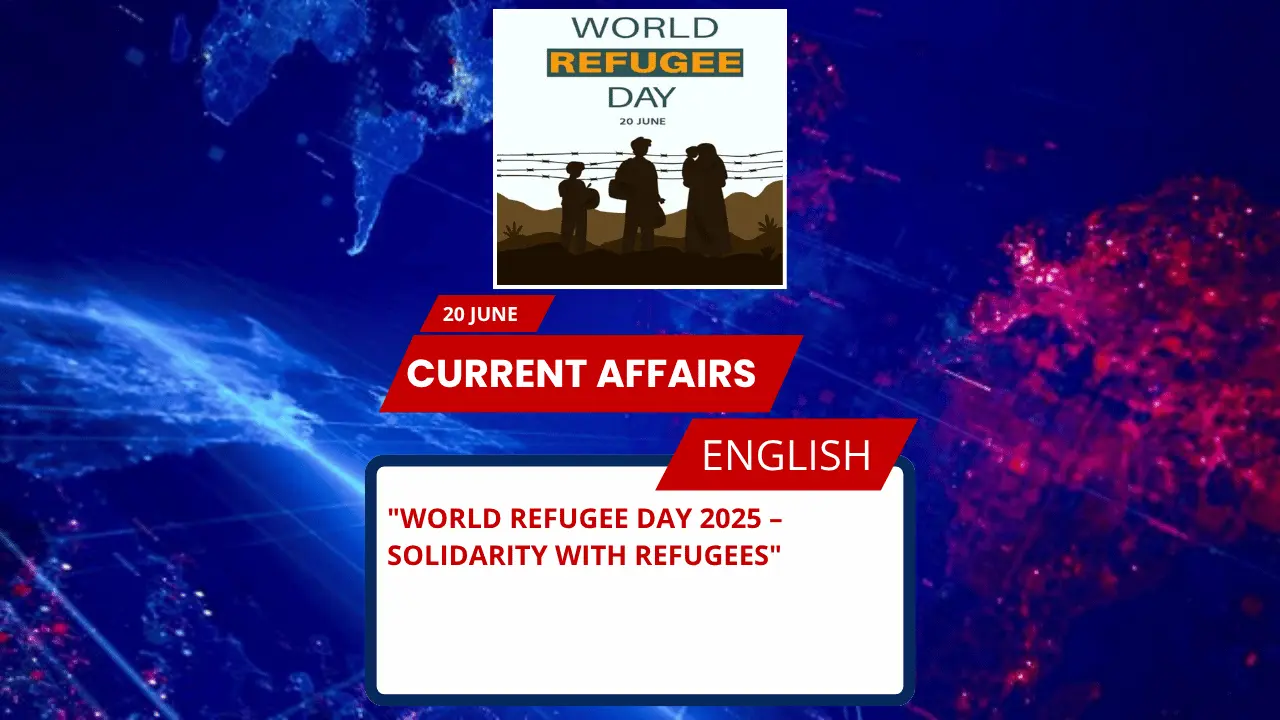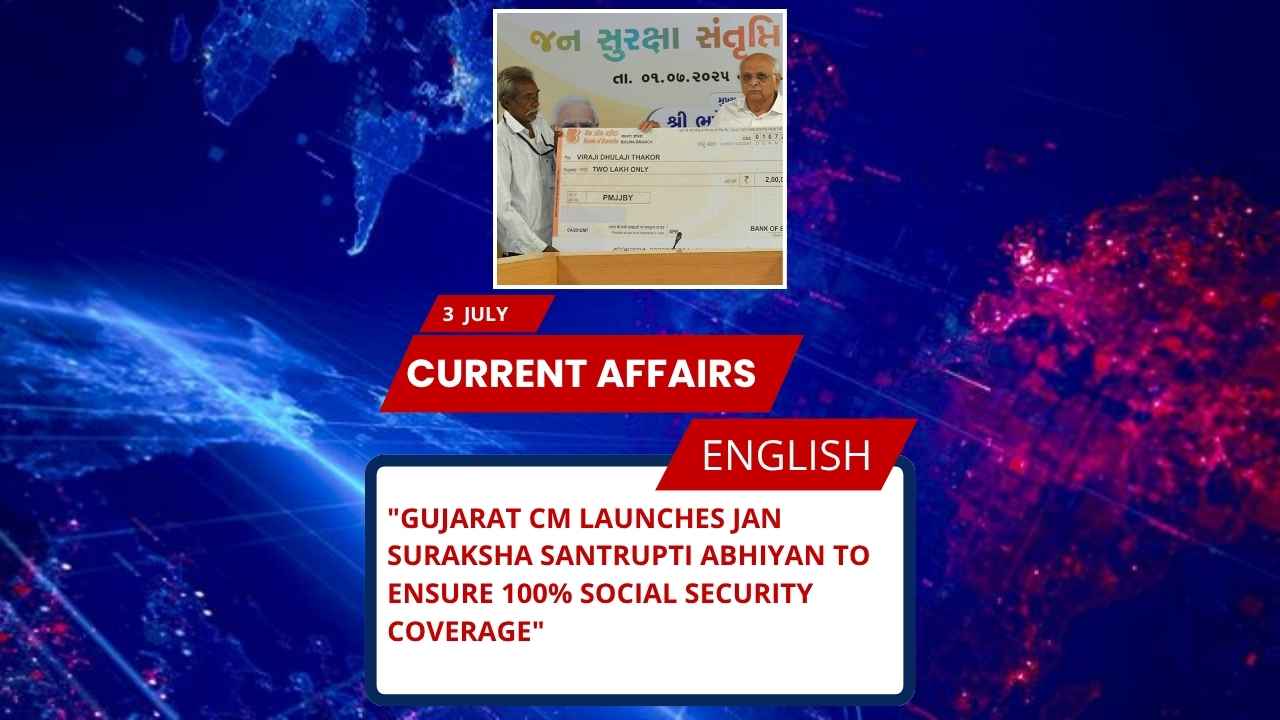
Key Points (SSC/Govt Exam Focus)
- Date: June 20 each year – designated by the UN.
- 2025 Theme: “Solidarity with Refugees” – shifting from empathy to action.
- Global Displacement: Over 70 million forcibly displaced; nearly 30 million refugees.
- Categories: Refugees, Asylum-seekers, IDPs, Stateless persons, Returnees.
- UN 1951 Convention + 1967 Protocol:
- Principle of non-refoulement
- Rights: work, housing, education, freedom of movement, legal access
- Significance: Empowers refugee contributions, strengthens communities, promotes inclusion.
Detailed Overview
What is World Refugee Day?
World Refugee Day, observed on June 20, honours people who have been forced to flee their home due to war, persecution, or violence. Established by the UN to build empathy and highlight their resilience.
2025 Theme: “Solidarity with Refugees”
For 2025, the call is clear: go beyond words. With humanitarian aid under strain and global displacement at record highs, refugees seek opportunity—not charity. The theme urges policy change, community engagement, and amplification of refugee voices.
Who Falls Under the “Forcibly Displaced”?
- Refugees: Fear persecution due to race, religion, nationality, social group, or opinion.
- Asylum Seekers: Seeking refugee status; application pending.
- Internally Displaced Persons (IDPs): Shifted within their own borders.
- Stateless Persons: Lack legal nationality, barred from basic rights like education and healthcare.
- Returnees: Former refugees returning home; often need reintegration support.
UN Response & Legal Backbone
The 1951 Refugee Convention and its 1967 Protocol define refugee rights and state obligations:
- No forced return to places of danger (non-refoulement)
- Equal treatment to nationals and foreign nationals
- Access to housing, work, education, legal recourse
These protections reflect the UN’s commitment to human rights and dignity.
Refugee Crisis Today
- By end of 2018: 70.8 million displaced, with nearly 30 million refugees
- Over half of refugees are children under 18
- Millions more are stateless, facing legal invisibility
- Continuous drive needed for durable solutions: resettlement, legal support, community integration
Why International Days Matter
International observances like World Refugee Day highlight global issues, mobilize political will, and commemorate human achievements of unity and justice.
MCQ Section & Associated State/Organization Facts
Exam‑Ready Profile Box
(Based on organizations or states mentioned in context — here: United Nations)
- United Nations (UN)
- Founded: October 24, 1945
- Headquarters: New York City, USA
- Secretary-General (2025): António Guterres
- Specialized Agencies: UNHCR (for refugees), UNICEF, WHO
Multiple‑Choice Questions
- Which of the following principles is central to the 1951 Refugee Convention?
A) Termination of refugee status after 5 years
B) Non‑refoulement
C) Mandatory repatriation
D) Statelessness resolution
Answer: B) Non‑refoulement - What is the theme of World Refugee Day 2025?
A) Building new futures
B) Solidarity with Refugees
C) Education and Displacement
D) Children on the Move
Answer: B) Solidarity with Refugees - Which UN agency is primarily responsible for refugee aid and protection?
A) UNICEF
B) WHO
C) UNHCR
D) UNESCO
Answer: C) UNHCR - Stateless persons are at risk because they lack access to which of the following?
A) Civil rights
B) Education and healthcare
C) Employment
D) All of the above
Answer: D) All of the above
H2: FAQs for UPSC‑Style Answer Writing
Q1: What are the different categories of forcibly displaced persons? Explain with examples.
Answer (60–80 words):
Forcibly displaced persons include refugees (fleeing persecution across international borders), asylum seekers (awaiting status recognition), internally displaced persons (IDPs) (dislocated within their country), stateless persons (without nationality or legal protections), and returnees (former refugees resettling back). Each group faces unique legal, social, and economic challenges and requires tailored protection—from safe legal status and access to basic services to reintegration support.
Q2: Discuss the importance of the non‑refoulement principle under the 1951 Refugee Convention.
Answer (50–70 words):
Non‑refoulement prohibits returning a refugee to a place where they face serious threats to life or freedom. As the cornerstone of refugee protection, it ensures safety and asylum irrespective of broader entry policies. It binds States legally and morally, reinforcing international human rights. Violations can lead to persecution or loss of life, underlining its inviolable status in international law.
Q3: Evaluate the relevance of World Refugee Day in today’s global context.
Answer (60–80 words):
World Refugee Day commemorates refugees’ resilience and advocates for inclusion. Amid rising displacement, it mobilizes public and political action to address crises. The 2025 theme, “Solidarity with Refugees,” urges global responsibility beyond goodwill, pushing for policy reforms, community involvement, and equal opportunity. By spotlighting refugee contributions, the Day fosters unity and empathy, crucial for sustainable integration and social cohesion.
Q4: What measures can host countries adopt to support refugee integration?
Answer (50–70 words):
Host countries should adopt legal frameworks ensuring refugee work rights, housing, education, and healthcare. They must streamline asylum procedures, allow language and skills training, and facilitate employment access. Promoting anti-discrimination policies, community awareness campaigns, and public-private partnerships boosts inclusion. Safe pathways for family reunification and civic participation further empowerment, aiding refugees to contribute meaningfully to host societies.







